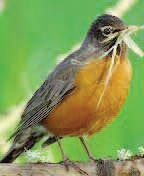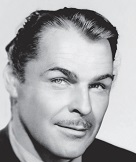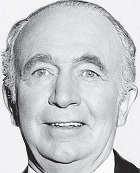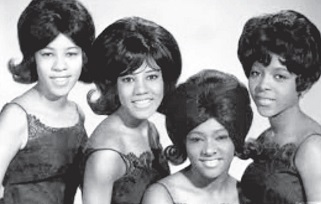SOLON & BEYOND, Week of March 16, 2017
 by Marilyn Rogers-Bull & Percy
by Marilyn Rogers-Bull & Percy
grams29@tds.net
Solon, Maine 04979
Good morning, dear friends. Don’t worry, be happy!
The Solon Pine Tree 4-H Club met on March 11, for their sixth meeting with Hunter Soucer as president. The club raised $170 on the bake sale on town meeting day to benefit the Solon Food Cupboard.
The members voted to donate $50 to the benefit for Zack Corson. Zack was a past member of the club. Linda French invited the 4-H club to visit the Solon Food Cupboard. The members voted to do this after the April meeting.
The Evergreen Campground will host the 4-H club and leaders to a camping weekend this summer. The members voted to do this, and Cliff Stevens, of Moxie Outdoors, has offered to take the members on a rafting trip on the Kennebec River and to do a water safety meeting.
Desmond Robinson, Tehya Caplin, Laci Dickey, Sarah Craig and Dystony Young did demonstrations. Laci Dickey is planning to do hers on March 25 at the County Demonstration tournament. The next meeting will be on Saturday, April 8, at 9:30 a.m., at the Solon Fire Station. Members not giving their demonstrations at the March meeting will do theirs in April.
The Solon Congregational Church will be hosting a solo piano concert on Saturday, March 25, at 6 p.m. This will be featuring Alexander Walz, of North Anson. Refreshments will be served. Donations will be accepted.
I know bragging is not nice, but I’m going to do it anyway! Alex, or most people call him Zander, is my grandson and he is a very special guy,. When he plays the piano you can feel how much he loves music. I highly recommend this event and it will benefit the church as well.
The grades 3-5 students at Solon Elementary School are getting ready to take the Maine Educational Assessment (MEA), which will start the week of March 20. Students in all three grades will take tests in reading, writing/language, and math. Later the fifth graders will take a test in science. Then all three grades will do a writing assessment in May.
This year’s test will be taken on thye computer. The test will be administered over multiple days so that students do not get too tired. Teachers are using practice items and teaching test-taking strategies with students to help prepare them.
The spring exhibit at the Margaret Chase Smith Library, in Skowhegan, is open for viewing. “Encore! Walking the Red Carpet with Margaret,” focuses on Senator Smith’s many connections to Tinseltown. Come see Margaret hobnob with Hollywood royalty like Jimmy Stewart, Esther Williams, Bob Hope, Marlene Dietrich, and Ronald Reagan.
This also introduces the first Margaret Chase Smith Research Scholarship recipient; highlights other researchers; and indicates the enormity of snowfall in Maine .
But spring is just around the corner and they welcome visitors, school groups, and friends to this remarkable tribute to one of Maine’s most beloved political figures.
I’m always glad when I have space to print such goings on in this area. I would still welcome any news I might receive from the Solon Coolidge Library, but I hate to keep bugging people.
And now for Percy’s memoir: I may not pass this way again, Lord let me stop awhile; To help some stranger on the way; And make somebody smile! I may not pass this way again. Lord, let me find the poor, And give them food and show them love; And lead them to Thy door! I may not pass this way again, Lord, let me love and give; And do according to Thy will While on this earth I live! (words by Marion Schoeberlein.)
I’m going to put in two of his memoirs this week, hope you like his choices: “We shall steer safely through every storm, so long as our heart is right, our intention fervent, our courage steadfast, and our trust fixed on God.” (words by St. Francis de Sales.)


 GARDEN WORKS
GARDEN WORKS Now let’s look at is what to plant. Long-season seedlings that take a long time to get to a plant-able size from seed are happiest and most productive when started early. If these seeds were sown directly in our gardens here in Central Maine, they likely would not have time to reach their full potential. That’s why we start them early indoors. The cast of characters starring in your grow system could include leeks, onions, peppers, tomatoes, eggplant, artichoke, long-season herbs, and perennial flowers. Most likely it will state in the seed catalog or on the seed packet whether or not the seed needs to be started early. Since here in Maine we can get anywhere from 90 to 140 frost-free days, it is important to pay attention to the days needed until harvest that is listed with the seed. Timing is everything, which goes along with our next point:
Now let’s look at is what to plant. Long-season seedlings that take a long time to get to a plant-able size from seed are happiest and most productive when started early. If these seeds were sown directly in our gardens here in Central Maine, they likely would not have time to reach their full potential. That’s why we start them early indoors. The cast of characters starring in your grow system could include leeks, onions, peppers, tomatoes, eggplant, artichoke, long-season herbs, and perennial flowers. Most likely it will state in the seed catalog or on the seed packet whether or not the seed needs to be started early. Since here in Maine we can get anywhere from 90 to 140 frost-free days, it is important to pay attention to the days needed until harvest that is listed with the seed. Timing is everything, which goes along with our next point: TRAINING YOUR PERFORMANCE DOG
TRAINING YOUR PERFORMANCE DOG INside
INside by Roland D. Hallee
by Roland D. Hallee The American robin is the second most populous bird in North America, behind only the red-winged blackbird, and just ahead of the European starling, in their numbers. With an estimated population of 320 million individuals, the bird is not threatened with population decline. The International Union for Conservation of Nature (IUCN) evaluates the robin as least concern. At one point, the bird was killed for its meat, but it is now protected throughout its range in the United States by the Migratory Bird Act. So, look but don’t touch.
The American robin is the second most populous bird in North America, behind only the red-winged blackbird, and just ahead of the European starling, in their numbers. With an estimated population of 320 million individuals, the bird is not threatened with population decline. The International Union for Conservation of Nature (IUCN) evaluates the robin as least concern. At one point, the bird was killed for its meat, but it is now protected throughout its range in the United States by the Migratory Bird Act. So, look but don’t touch. by Peter Cates
by Peter Cates




 by Katie Ouilette
by Katie Ouilette A second ingredient to successful seedlings is the substrate. Always remember to use organically-produced, fresh, pest and disease-free planting medium, whether purchased or homemade. Products that support germination are fine-textured and oftentimes do not contain soil. (These are especially helpful for starting small seeds.) Examples are peat, coir, vermiculite, etc. When purchasing bags of medium, look for those specifically formulated for germination. (Later on, when transplanting, we’ll use a coarser mix with organic matter to provide nutrition for the growing plants- but for now we’re just interested in germination.)
A second ingredient to successful seedlings is the substrate. Always remember to use organically-produced, fresh, pest and disease-free planting medium, whether purchased or homemade. Products that support germination are fine-textured and oftentimes do not contain soil. (These are especially helpful for starting small seeds.) Examples are peat, coir, vermiculite, etc. When purchasing bags of medium, look for those specifically formulated for germination. (Later on, when transplanting, we’ll use a coarser mix with organic matter to provide nutrition for the growing plants- but for now we’re just interested in germination.)